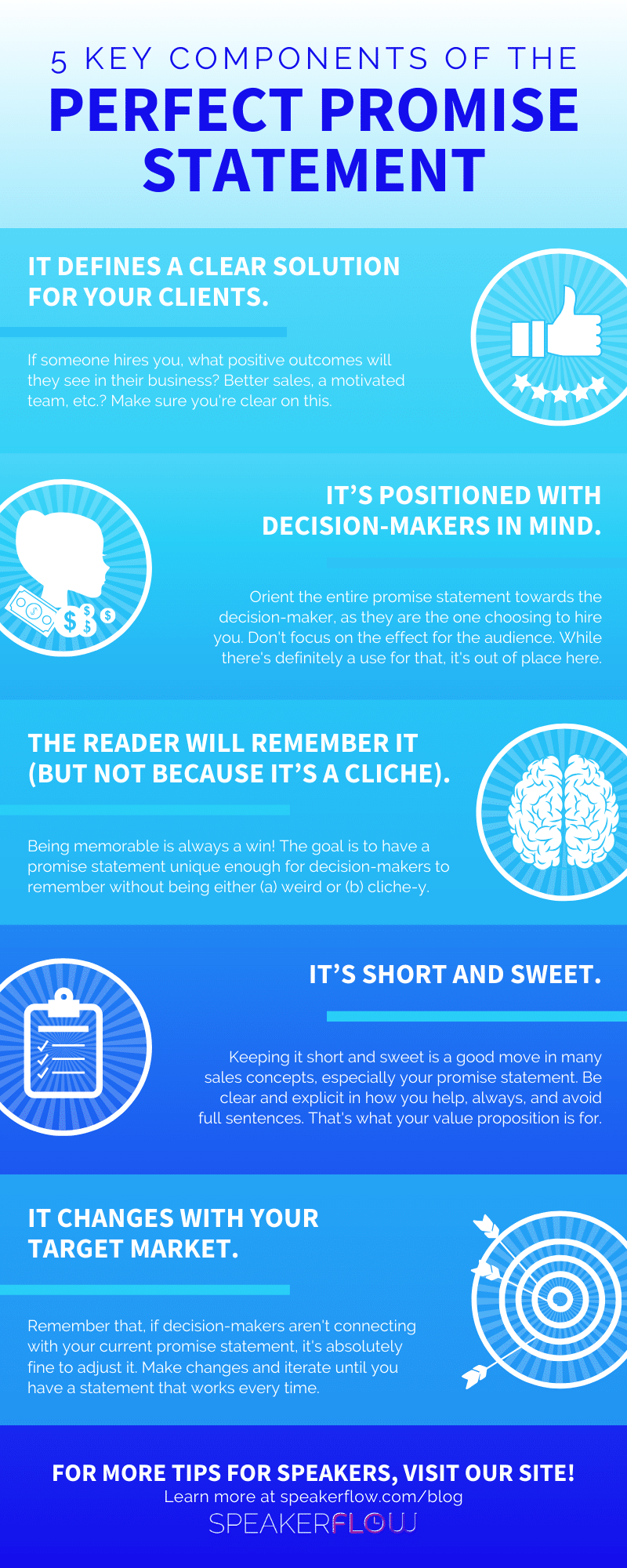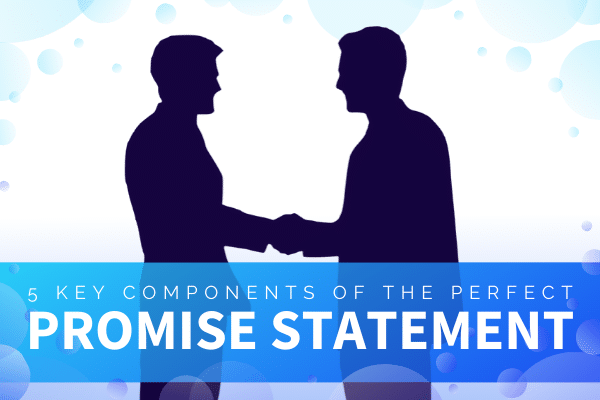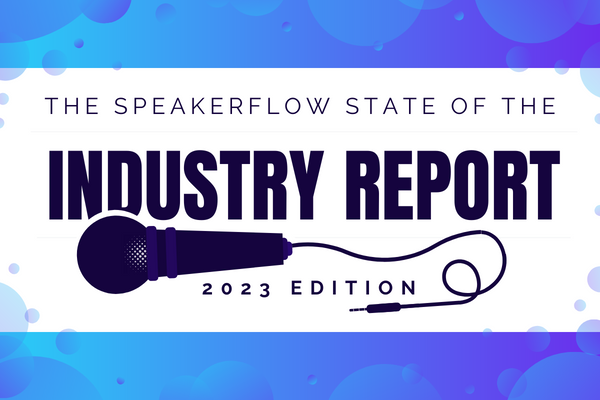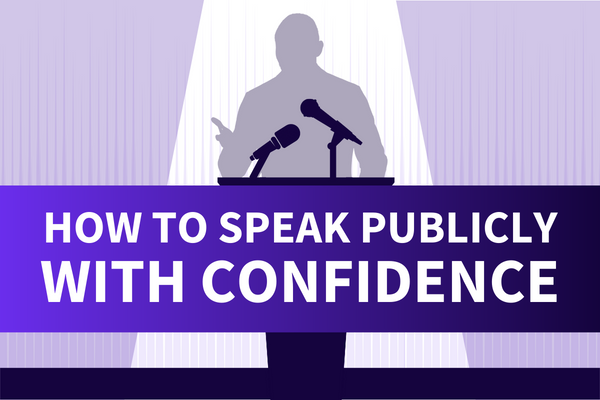When a meeting professional or event planner visits the website for your speaking business, what’s the most important thing you want them to take away? You want them to see what an inspiring, insightful, kicka*s speaker you are! For many experienced speakers, this is conveyed through photos, showing them with a huge audience. Others display it through their name alone, as their reputation in the industry is already established. But for the majority of professional speakers, the easiest and clearest way to communicate your value is through a promise statement.
To put it simply, your promise statement is a brief summary of the benefits awarded to your clients. This can include more engaged team members, better team morale, or higher sales and profitability. Designed to engage the decision-maker considering you for their event, a promise statement can be hard to get just right. After all, capturing someone’s attention with only a few words while staying true to your brand can be a challenge. Because of these challenges and the importance of a solid promise statement, we on the SpeakerFlow team have outlined the top five components of the best statements out there. We’ll also cover a few examples from prominent speakers in the industry. That way, you have a jumping-off point when you create your own promise statement. 👍
1. It defines a clear solution for your clients.
Before anything else, your promise statement should clearly define the positive impacts of hiring you for an event. Whether they’re looking for a keynote speech, breakout presentation, or workshop, decision-makers what to know what they’re gaining by choosing you. They also want to know what you bring to the table without all of the sales fluff. Outside of the speaking industry, we’ve all spoken to a salesperson that talks around the question you asked and doesn’t provide an explicit answer. Politicians are another example of this. All in all, though, regardless of who we’re looking at, I think we can all agree that it’s incredibly frustrating. Event and meeting professionals feel the same way, so your promise statement cuts to the chase before you even meet with them.

Among speakers, one of the best examples of this clarity in action is Jacob Green. In Jacob’s promise statement, he states, “Navigate Change, Overcome Adversity, Increase Performance: Give Your Team the Boost They Need to See Change Clearly”. The first three pieces of this quickly and clearly answer the question “What will I gain from working with Jacob?”. They also act as a qualifier for decision-makers considering Jacob, so if they’re not working to overcome change, adversity, or poor performance, they know Jacob might not be their guy. That way, neither they or Jacob have to waste time on a call that ultimately ends with disqualification.
In your own speaking business, your promise statement should accomplish these things, too. In a short phrase or three quick outcomes (as seen with Jacob), craft your promise statement to answer the question, “What do decision-makers gain from working with me?” Focus on the solutions you provide for your clients, and build your statement around them.
2. It’s positioned with decision-makers in mind.
That brings me to the second key aspect of a good promise statement: proper positioning. When building your brand, although it’s helpful to communicate how audiences benefit from your work, the real goal is to show your value to decision-makers. This is important for two reasons. First, the decision-maker is the one hiring you, so they’re the one you need to impress. No matter how great a potential audience member may think you are, if their boss isn’t impressed, you’re not getting hired.
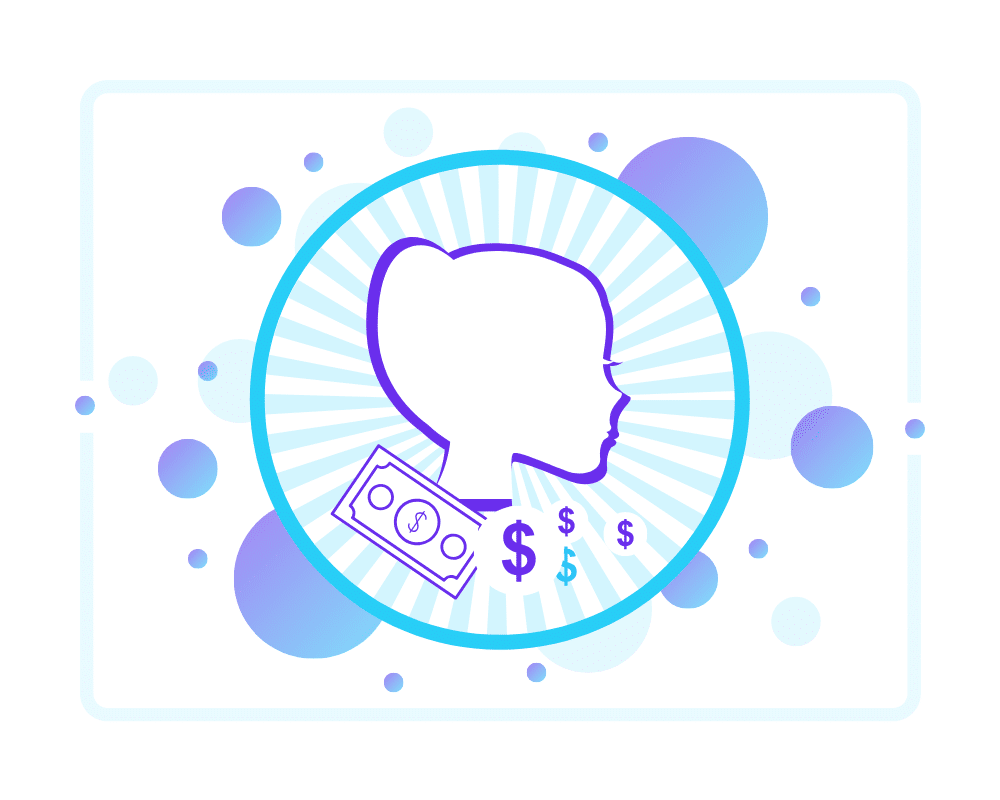
Second, the decision-maker is the one that could refer you to other event organizers down the road. In this case, although audience members can provide referrals, too, the decision-maker provides the ultimate verdict of whether you were worth your speaking fee or not. You obviously are, but hearing that directly from event planners you’ve worked with rather than from you adds to your credibility. A promise statement positioned towards new clients, combined with testimonials from past clients, makes this easily achievable.
A great example of this is that of U.S. Air Force officer and motivational speaker Jason O. Harris. Jason’s statement, “Trust your people like your business depends on it,” keeps decision-makers in mind, as seen in the phrases “your people” and “your business”. In your promise statement, using the same kind of language is key. Write your statement like you are speaking to a decision-maker, and they’ll more easily be able to relate (and hire you, as a result!) when they read it later.
3. The reader will remember it (but not because it’s a cliche).
Moving on, the third component of a well-written promise statement is uniqueness. Obviously, there are thousands of professional speakers out there, all working with many of the same goals in mind. Motivate people? Check. Improve the world around them? Yep. Earn compensation for all of this? Absolutely. However, although speaker messaging can be similar, the speaking industry is unique in that every speaker is different. Because of that, even if you and another speaker have the same basic message, the ways in which you communicate that message can be dramatically different.

Let’s look at Wayne Lee and Margaret Graziano, for example. Although both speak about empowering employees in order to boost company performance, each of them has a unique presentation style and way of achieving this empowerment. Wayne is a performer and, in the typically optimistic attitude of performers, frames his promise statement with a “What if?” attitude. In it, he states, “Unparalleled Keynotes Designed to Take Your Organization to its Full Potential: Imagine the possibilities when your teams & leaders are aligned in purpose and performance.” Although long, it’s undeniably appealing to decision-makers and clearly defines the benefits of working with Wayne. On the flip side, Margaret takes a more emotional approach, stating, “Get the most value out of your best asset: Your People.” Although both promise statements are engaging, they’re memorable for different reasons.
As you write you own promise statement, strive for this level of memorability. Not only craft your statement so that you stand out from other speakers in the same niche as you. Remember to appeal to decision-makers in way they’ll remember. That way, even if they leave your website now, the next time their problem pops back up, they’ll remember you as the solution and give you a call.
4. It’s short and sweet.
The fourth thing to keep in mind is one I’ve mentioned a few times already: length. Overall, your promise statement should be quick and simple, and you should be able to say it in less than a few seconds. From a selling standpoint, it’s important to not confuse your promise statement with your value proposition. Essentially, both selling tools say the same thing. However, the value proposition is longer and acts more like an elevator pitch. From there, your promise statement distills your pitch to a few words.

For example, on Kindra Hall’s website, we can see her promise statement, “Capture Attention, Close Sales, Increase Influence through the art of strategic storytelling,” at the top as soon as the page loads. If you read it aloud, it takes about 5 seconds, so it’s nice and short. Further down the page, however, her value proposition expands upon this, saying “Kindra Hall helps individuals and companies capture attention, close more sales and blow up their brands through the fine art of strategic storytelling. Each presentation is a meta-learning experience with powerful research, engaging storytelling, and actionable strategies for measurable results.” In this way, she catches the decision-makers attention with her promise statement at the top, prompting them to continue reading. Then, with her value proposition, she explains her focus, her message, and what they should hire her.
Likewise, your own promise statement and value proposition will work in tandem in your speaking business. Remember that your promise statement is quick, clear, and engaging, so you don’t need to use it to share everything you do. Just get the decision-maker’s attention, and your value proposition can communicate the rest of the details.
5. It changes with your target market.
Finally, your promise statement never needs to be set in stone. In fact, it can and should revolve around your target market. That means, if you write a promise statement and it’s not jiving with people, you can always change it. Get feedback from speakers in your circles or from past clients. Take notes when you meet with decision-makers that ultimately turn out not to be a good fit. Even if you think your promise statement is perfect, listen to people that read it and either misunderstand it or don’t understand it at all. From a marketing standpoint, their confusion is a stepping stone for improvements to your promise statement in the future.

Within our team, we’ve experienced this first hand, even as young a business as we are! Since we launched in May 2019, we’ve gone through three iterations of our brand’s promise statement. Currently, “Master the Business of Speaking: Get Organized. Get Known. Get Paid.” is our promise statement. So far, that’s worked pretty well, but, again, if we need to change it again, I’ll be back to this blog to change it here, too. 🙂
As you craft the promise statement for your own speaking business, be kind to yourself and remember that you can always change it. Hopefully, this outline helps you pack a solid punch on your first round, but it’s like the old saying goes. If at first you don’t succeed, try, try again.
For more information about writing a promise statement, check out Jane Atkinson’s “Crafting the Perfect Promise Statement” guide. Although her tips differ from ours in some ways, she has a lot of good feedback for using your promise statement that can be used in conjunction with these guidelines.
